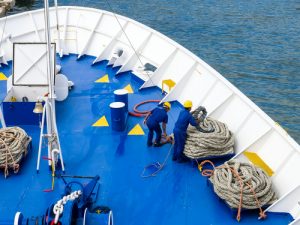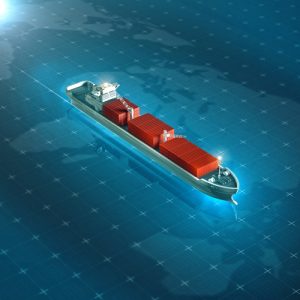Posted in Marine industry talk
The notion of autonomous vessel operation has divided the industry as never before. Perhaps, like a certain loved or hated yeast-based spread, when the topic of conversation turns to robotic ships debate gets heated and highly charged, with no room for the neutral.

Part of the reason is that the concept is invariably viewed as a binary problem. While this might seem apposite for a fully computer-controlled vessel, the idea that vessels must either be fully manned or virtual ghost ships is overly simplistic.
Ships shedding crew is hardly a new phenomenon, after all. A commercial ship operating with a complement of 40-plus officers and engineers seems extravagant by today’s standards, but such was the norm less than 50 years ago. Today a large containership like the 400m-long Emma Maersk typically sails between Europe and China with a crew of just 13.
With further advances in automation and improved mechanical reliability, it seems likely this downward trend will continue, with the automation of each task no doubt being computed somewhere as a possible headcount saving.
But autonomous operations and unmanned vessels are not one in the same. An autonomous ship does not have to be unmanned, while the remote control of an unmanned ship means it is not, in fact, autonomous.
In the future, a ship might navigate itself across the Pacific autonomously but still have crew tending to the cargo or carrying out routine maintenance, taking control when the ship enters more trafficked waters as it approaches its destination. Or, perhaps, they will return to the bridge to follow instructions from a regional ship traffic control centre, much like passenger airliners in their final descent.

It’s worth noting here that even today Masters must often entrust their vessels to local pilots for navigating the last mile, particularly if the port or terminal is located along a more challenging waterway. He may not be driving, but ultimately responsibility for the vessel still lies with the Master.
The first truly unmanned vessels are unlikely to be deep-sea going. Instead, they will likely take to the water on short-sea routes close to shore, where they can be closely watched and assistance can be easily rendered should something go awry. The Yara Birkeland, announced last May, fits this description. It will be the world’s first fully-electric container vessel and will be sailing between Yara’s Norwegian production facilities at Herøya and the ports of Brevik and Larvik by 2020.
Advocates of full automation are unlikely to find many seafarers voting to lose their jobs, no matter how routine they may appear to the outsider, but again this is a debate covering more than binary positions. Remote control offers operators a halfway solution, planned ashore but largely ‘human-free’ on the water, and remote interventions saved for sticky situations. Rolls-Royce is leaning heavily in this direction. Last year, it and global towage operator Svitzer gave the world’s first public demonstration of a remotely-operated commercial vessel – a 28m long tug – in Copenhagen harbour, Denmark.
A useful way for readers to familiarise themselves with levels of autonomy can be found here. We recommend reference to this source whenever faced by a headline, LinkedIn blog or webinar about the robotic ships that may one day be routinely sharing our seas. It is always good to know what all the trouble is about.
